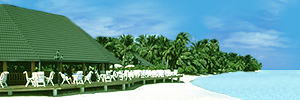By Eric Morgan
Lake Tahoe, the lake itself and the small towns scattered
around it, are located in the Sierra Nevada Mountains on the
border of Nevada and California. The lake is a freshwater
lake and is renowned for the clarity and chill of the water
(even in summer). The area is also well known for its breathtaking
views of the Sierra Nevada??ôs and the ski resorts, lake activities,
hiking, camping, and all sorts of off trail recreational sports.
Of course, Lake Tahoe is historically best known for the discovery
of silver in the Sierra Nevada Mountains in the 1860??ôs. During
the Gold Rush happening in California, fortune seekers headed
to Tahoe and Virginia City, Nevada, hoping to hit the next
mother lode, like the Comstock Lode found in 1859. Miners,
workers, and even families traveled over the treacherous Donner
Pass on nothing but foot, wagons, and horses. The trek over
the mountains became so popular that it was named the ???Bonanza
Road??? (which later became the still used Highway 50).
Eventually, the silver and gold ran dry and the miners slowly
left, or pursued different avenues for making money such as
tolls and taxes to use the pass and lumber harvesting. However,
that was short-lived and as early as the 1900??ôs, Lake Tahoe
became a vacation spot for the rich and famous of San Francisco,
California. Hotels catering to the rich looking to pamper
themselves in a beautiful setting became the new commerce.
However, the lake actually has history prior to the Gold Rush.
The lake was discovered by Kit Carson and John Fremont in
1844, but the Washo Indians had been living around the lake
and utilizing its fish and fresh water for centuries prior
to that. The Washo used the area as a summer venue for their
religious ceremonies and meeting with other factions of the
tribes that wintered in different areas. It was the Washo
that named the lake; their word was ???Da-ow-a-ga??? which translates
to ???edge of the lake.??? When Carson and Fremont came, they
could not understand or pronounce the Indian word and mispronounced
it as Tahoe. The early explorers actually named the Lake Bonpland
(meaning Mountain Lake after a French botanist) and Bigler
Lake after California??ôs third governor. But none of these
names stuck. The people in the area still called it Tahoe.
In 1945, they gave in and officially renamed the Lake Tahoe.
In 1960, the Olympics Winter Games were held in Lake Tahoe
at one of the oldest ski resorts, Squaw Valley, and that began
the reputation for Lake Tahoe being thought of as the ideal
ski destination in the United States.
Luckily, for all that live and visit Lake Tahoe, the government
of California and Nevada worked together to create the Tahoe
Regional Planning Agency in 1968. The Agency was convened
to ensure that all developments and tourist areas were limited
to allow the natural environment of the area to flourish and
continue to be a wild and natural escape for as long as people
wanted to visit.
The foresight of these early precautions has helped to maintain
some very delightful and amazing historical sites for the
modern tourist to see. A few of the most notable are the Vikingsholm
Castle on Fannette Island, Ehrman Mansion, and Taylor Creek
Stream Profile Chamber.
Located at the west end of Emerald Bay, Nevada, Fannette Island
(the only island in Lake Tahoe) with the Vikingsholm Castle
atop. The island and the castle are a great way to get to
see first hand some of the diverse people and cultures that
traveled through the basin. The castle was built in 1928 by
Mrs. Lora J. Knight who instructed Scandinavian architect
Lennart Palme to build a home without chopping down, moving,
or injuring any of the site??ôs natural trees.
Knight and Palme decided to build a Norse fortress from about
800 A.D. in full scale, method, and detail. They used only
those tools and concepts of those used in ancient Scandinavia.
The towers, turrets, towers, carvings, and hand-sanded wood
were used to create the modern fortress. They installed a
sod roof with grass that the ancient Scandinavians used to
feed livestock during the winter. Mrs. Knight also wanted
her furniture and d?©cor to reflect the Scandinavian era, but
many of her desired artifacts were so historically significant
that their export was forbidden by the Norwegian and Swedish
governments. But she was so driven to complete her vision,
she had them copied exactly and recreated for her house.
The Ehrman Mansion is located in the Sugar pine Point State
Park in California. The property was owned, until 1965, by
Isaias W. Hellman, who built his summer home, Pine Lodge in
1903, then he began buying property in Lake Tahoe in 1913
and got up to about 2000 acres. The Mansion and the 1975 acres
of the State Park give a good insight into the Tahoe of the
early turn of the century. Of the decadence, yet need, to
have the land remain wild.
Similarly, the Taylor Creek Chamber is a place where people
can go and experience, nearly first hand, what the water and
the creatures living in the lake are like. The glass bay windows
walls, the waterfall, and the creek-bottom-eque floors complete
with sound effects make this experience realistic, but without
getting into the chilly Tahoe water.
The viewing windows of the actual lake then become a huge
mural that wraps around the walls of the room, or chamber.
There is also a huge cottonwood tree growing in the middle
of the chamber. Visitors can view scenes of the Taylor Creek
ecosystem throughout the four seasons, with a final scene
looking down Taylor Creek where it empties into Lake Tahoe.
About the Author: Find out more about Lake
Tahoe and Skiing.
Source: www.isnare.com
Permanent Link: http://www.isnare.com/?aid=222494&ca=Travel





